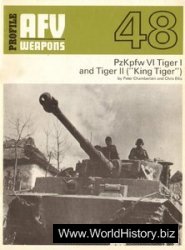The most prominent Mohawk in American and Canadian history is Theyendanegea, better known by his English name, Joseph Brant. What makes Joseph Brant so interesting historically is that he was successful in both the Indian and non-Indian worlds. He was born in the Ohio Valley in 1742, while his Mohawk parents were on a hunting trip there. But he grew up in the Mohawk valley of New York State.
An Englishman of Irish descent named William Johnson, a land speculator and trader who built Fort Johnson and later Johnson Hall in Mohawk territory, was a good friend to the Haudenosaunee and was fair in his dealings with them. He admired their character, participated in their ceremonies, and married a Mohawk woman by the name of Molly Brant. Her brother, Joseph Brant, played with William Johnson’s son, John, and his nephew, Guy. Because of William Johnson’s close relationship to the Indians, the king of England made him the superintendent of Indian affairs for the northern colonial region.
When fighting broke out between the British and French in the French and Indian War starting in 1754, William Johnson asked for the help of his Mohawk friends in an expedition to Lake George. Chief Hendrick led a Mohawk contingent. One of the Mohawk participants was Thayendanegea, also known as Joseph Brant, a boy of only 13. Johnson and his British and Mohawk troops won the Battle of Lake George in 1755. He received a knighthood from the king in recognition of his victory. He later led an expedition against Fort Niagara on Lake Ontario. Again, many Mohawk, including the young Joseph Brant, fought under him.
William Johnson recognized Joseph Brant’s exceptional talents. After the war, which ended in 1763, he sent the 19-year-old youth to Moor’s Indian Charity School in Connecticut (which later was moved to New Hampshire and became Dartmouth College). Brant proved himself an excellent student, mastering spoken and written English.
Joseph Brant later acted as interpreter for Sir William Johnson. When Sir William died in 1774, Guy Johnson became the new superintendent of Indian affairs, and Brant became his interpreter and personal secretary. This was the period just before the outbreak of the American Revolution. When violence erupted in 1775 at Lexington, Massachusetts, with “the shot heard round the world,” the Haudenosaunee tribes were pressured to choose sides—their traditional allies, the British, or the American rebels.
At this time, Joseph Brant traveled to England with Guy Johnson. He made quite an impression abroad as an Indian ambassador. He met many famous Englishmen, such as the writer James Boswell and the painter George Romney, who painted his portrait. Brant also met King George III. At the time, most people, when presented to kings, knelt and kissed their hands, but, as legend has it, not Brant, who considered himself the king’s equal. Instead, he ceremoniously kissed the queen’s hand.
When Joseph Brant returned to North America, he worked hard to win over all the Haudenosaunee tribes to the British cause against the rebelling Americans. His natural leadership abilities and statesmanship now revealed themselves. His fellow Mohawk, plus Seneca, Onondaga, and Cayuga bands, accepted his leadership, but not the Oneida and Tuscarora, who had many friends among the American settlers.
Joseph Brant, who had already demonstrated himself as a fighter, student, translator, secretary, ambassador, orator, and statesman, now proved himself as a general in the field. He led his warriors and Tory troops in many successful raids on settlements and forts in both New York and Pennsylvania.
One of the most famous battles took place in Cherry Valley, New York, on November 11, 1778. The small settlement was located about 50 miles west of Albany, near Otsego Lake. Joseph Brant and Ranger Captain Walter Butler led approximately 700 troops out of the southwest along an old winding Indian trail. They first attacked outlying settlements, picking off stranded settlers who could not make it back to the fort in time. Then they attacked the stockade, defended by the Seventh Massachusetts Regiment. The American troops repelled the Indian and Tory attack. Yet by the end of the fighting, 32 settlers were dead, and 40 more had been captured and led off to Fort Niagara. It is said that Brant personally saved the lives of many settlers, restraining his warriors from further attack. Time and again, he proved himself merciful in combat, urging his men to spare the innocent—not only women and children, but also men who did not take up arms.
The Cherry Valley raid and others convinced General George Washington to send an invading army into Iro-quoia, as the land of the Haudenosaunee sometimes is called. The Sullivan-Clinton Campaign, named after the generals in charge, succeeded in its goal of conquering the Haudenosaunee by destroying their villages and crops. The Haudenosaunee surrendered and in the coming years ceded vast holdings of land and retained only small state reservations. Most Mohawk left the United States for Canada.
Joseph Brant and his followers were granted a parcel of land by the Canadian government at Oshweken on the Grand River in Ontario. There he helped found the town of Brantford. He also founded a Mohawk chapel and translated the Book of Common Prayer and Gospel of Mark into the Mohawk dialect. He died in 1807.




 World History
World History









